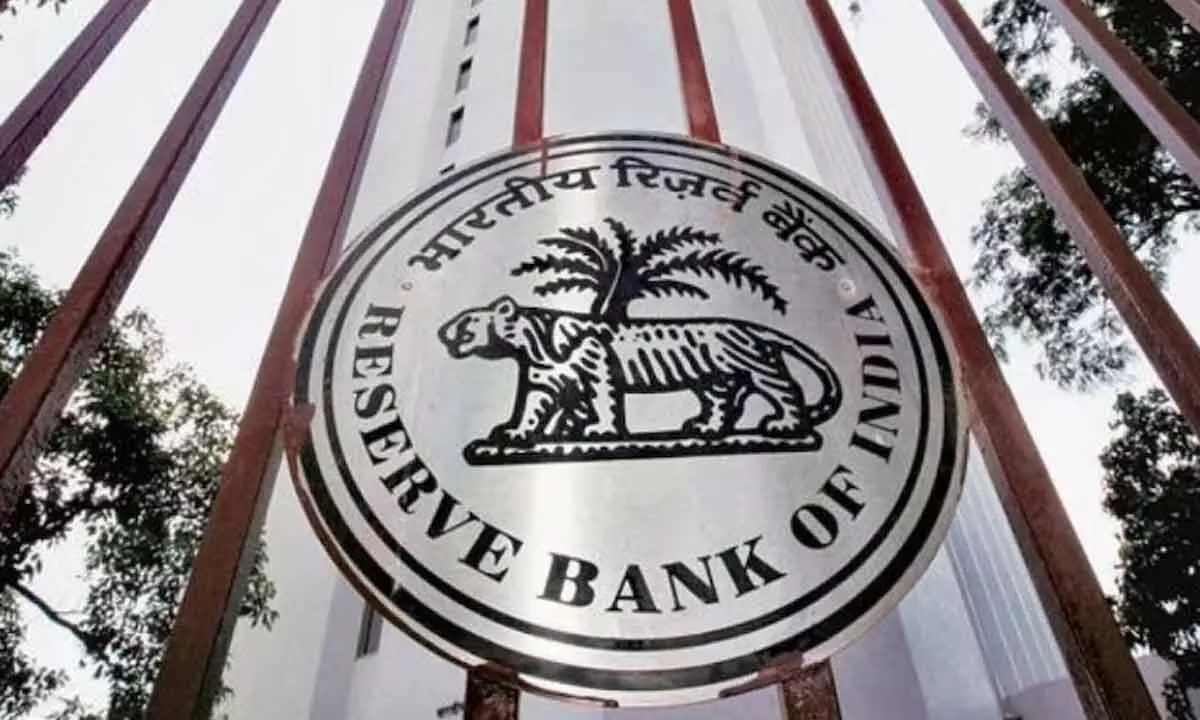Live
- Udupi MP’s queries, More key highways on high-priority
- Investing in Skills: Education Loans Paving the Way for Career Success
- Ghaggar river’s two stretches identified as polluted: Govt
- ICC chief Jay Shah meets Brisbane 2032 Olympics organising committee CEO
- Oxford Grammar High School Celebrates 44th Annual Sports Day with Grandeur
- Indian banking sector’s health remains robust, govt policy working very well: Top bankers
- iOS 18.2 Unveiled: New Features with ChatGPT Integration Revolutionize Your iPhone
- 'Run for Viksit Rajasthan' to be annual event, says CM Sharma
- Nitish Kumar launches '109 free medicine vehicles' in Patna
- India have to play their best cricket at the Gabba to win series: Harbhajan
Just In
‘Elephant in the room’, yet no party admits to it


Reserve Bank of India
Reserve Bank of India (RBI) Governor Shaktikanta Das last week called inflation control as a serious challenge before the country, referring to it as “the elephant in the room.”
Reserve Bank of India (RBI) Governor Shaktikanta Das last week called inflation control as a serious challenge before the country, referring to it as “the elephant in the room.” He, however, sounded optimistic that inflation appeared to be easing to the desirable threshold (forest) of 4 per cent. Yet, the central bank maintained status quo on interest rates, paying no heed to pleas by business and industries. Despite optimism on inflation easing, and growth buoyancy in economy, sustained consumption by private sector, the RBI paused on the rate cut and preferred to keep focused on inflation easing to the targeted 4 per cent.
That inflation has been steadily and silently hurting the households, moreso of the poor, is borne by a report that the net savings of households in India fell to a nearly five-decade low of 5.1% of GDP in FY23. The situation may stay that way till nation reaps rich harvest of a normal monsoon due to likely La nina conditions. In the meantime, the country is hard put to endure a blistering summer with El Nino being more pronounced this year. Save for aRs 2 cut in oil prices, people could expect no respite from crude shocks in the future, with wars and conflicts posing graver threat to supply chains.
Food inflation rate has surged to over 8 per cent in recent months, driven by a rise in vegetable inflation to a seven-month high of 30.2 per cent in February.There has been spurt in prices of vegetables such as potato and onion. Edible oils and pulses have also added to the food inflation. With water sources fast drying and blistering winds sweeping across the nation, there do not seem to be any scope for any solace on the price front for a couple of months. Official figures show the price rise in spices is around 13.51 per cent, and that for vegetables shot up by as much as 30.25 per cent. Pulses, too, turned costlier by 18.9 per cent in recent months. The prices of the most important cereals went up by 7.6 per cent.
Though the macroeconomic fundamentals of the economy are strong amid robust tax collections, the living conditions of the poor are turning for worse. They are hit the hardest with wages stagnating in the private sector and prices spiralling on the consumption frontier.With businesses hurting, layoffs are a natural corollary in the unorganised sector. Increase in demand for MGNREGA jobs, for which Centre recently hiked wages by 3-10 per cent, shows growing rural stress and declining capacity of agriculture to sustain rural growth. It further affects demand for goods and services in the countryside, with implications for employment in the dependent industries.
With affordable food hard to come by, the poor naturally skimp on nutritious food and undernutrition or malnutrition would set in. Already, the country holds record as the largest contributor of undernourished people in the world (Worldometer), with around 194.4 million people, or 14.37% of its population not receiving enough nutrition. India has one-third of malnourished children globally.A few months ago, the Global Hunger Index cautioned that India’s child wasting rate, at 18.7%, was the highest; its child stunting rate at 35.5% was the 15th highest; the prevalence of undernourishment was 16.6%; and the under-five mortality rate was 3.1%.However, no party manifesto takes note of the ‘elephant in the room’ talks about all other things except reining in inflation, bettering lives of poor pragmatically. It is no surprising since in a democracy it is ‘yathapraja, tatha raja.’ We, the people, need to demand what is required of from our netas, and not fall for their polarization and false promises.

© 2024 Hyderabad Media House Limited/The Hans India. All rights reserved. Powered by hocalwire.com






